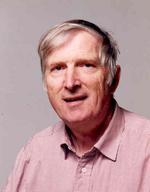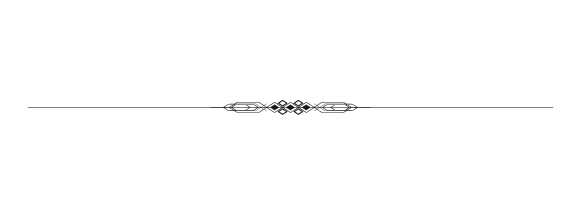Thirty years ago the UBC Institute of Astronomy and Space Science (IASS) boasted more than twenty associated faculty members from across campus. The Institute was formed in 1970 to fulfill two critical
functions. The first, to administer a three year Negotiated Development Grant (NDG) from the National Research Council “for research in astronomy and astrophysics.” The second, to provide a continuing forum for the astronomers who were split mostly between Physics and Geophysics. The Geophysicists had separated into the Department of Geophysics in 1963.
As far as I am aware, the only explicit astronomy content in UBC courses prior to 1965 was included in an introductory Geology course given by Valdimir Okulitch and by Jack Jacobs, Head of Geophysics, who developed Gepa 310, a highly successful introductory Geophysics course for non-science students. George Volkoff, whose theoretical work on neutron stars later assumed so much importance with the discovery of pulsars, appointed Bill Shuter in Physics in 1965 and Jim Gower in 1967, both Radio Astronomers. In 1966, one year after Bill’s appointment, Okulitch, by then Dean of Science, appointed Michael Ovenden as a Professor of Astronomy in Geophysics. Okulitch hoped this would blossom into an astronomy department to complement the Queen Elizabeth II (QEII) 4-m optical telescope then being constructed in the Okanagan. Michael began to develop an undergraduate astronomy program which evolved into joint major and honours programs with Physics and, like Bill Shuter, he attracted graduate students into a nascent graduate program. Jean Petrie joined Geophysics in 1967 as the first of many distinguished part-time lecturers to teach the science (Astr200) and non-science (Gepa310) introductory courses. Jason Auman and I were appointed in 1968 and 1969, respectively. We were all housed in the Hennings Penthouse.
In the 1960’s NRC was the University research funding agency. In a marriage of convenience, Michael joined Bill Shuter and Roy Nodwell in 1967 to apply for an NDG split between Radio Astronomy, Laboratory Astrophysics and Optical Astronomy. At that time there was little common ground between optical and radio astronomy – low frequency radio antennas were sensitive to non-thermal emission and at 21 cm pencil beam instruments could detect neutral Hydrogen – both invisible targets in the optical spectrum except for non-thermal emission for a few recent super nova remnants. Optical astronomers still used highly inefficient photographic emulsions and were largely preoccupied with stars. Sputnik and the Palomar 200 inch telescope discovery of quasars finally galvanised optical astronomers.
The Federal Government had given the go ahead for the QEII in 1964 but the site in the Okanagan turned out to be unsuitable and an invitation from the Americans to join with them instead in a large telescope in Chile precipitated an unfortunate public spat between certain Ontario astronomers and some in the west which led the Government to suspend work on the QEII. The UBC architects did not help by turning down the proposed building design for the mirror polishing shop. The latter was ultimately constructed at the Dominion Astrophysical Observatory in Victoria where the primary of the Canada-France-Hawaii telescope was eventually polished.
These developments forced a revision to the UBC NDG proposal and a resubmission in 1968 but NRC deferred a decision until the smoke cleared on the national astronomy scene. To cut a (very) long story short, in April 1970 NRC agreed to award UBC all of the funds asked for, $538,600. I still consider this remarkable given the equivalent in today’s $s. George Volkoff was very active in NRC at that time and I am sure we owe a lot to his influence. The funds were released on the understanding that UBC would give top priority to continuing a number of positions made under the grant. UBC provided a budget for the IASS, half secretarial position, a full-time technician and half of the Director’s salary.
Such wealth beyond avarice allowed the three areas of astronomy to flourish as well as initiating a regular seminar series and specialised meetings. Bill Shuter’s group erected a 15 foot dish antenna and receivers for millimetre observations on the South Campus, detecting their first solar signals at 40 G Hz in 1972 and CO near 110 G Hz in the Orion Nebula in 1973. Jim Gower left in 1972 and Phil Gregory and Bill McCutcheon were appointed in 1973 and 1974, respectively. Several PDF and technical appointments were also supported. Irving Ozier was the principal faculty appointment for Laboratory Astrophysics with major equipment and PDF positions.
The Geophysics Department moved “temporarily” (six months, I remember) to the old BC Research Building where it remained for the next thirty years. There I established a detector lab for the development of low-light-level electronic detection and other astronomical instrumentation. Harvey Richer and Greg Fahlman – a UBC Physics graduate – were appointed in 1970 and 1971, respectively, and Anne Gower filled the part-time lectureship vacated by Jean Petrie in 1970. Several excellent PDFs and technical staff were also supported. With the increasing number of Astronomers and Astronomy courses the Department name was officially changed to Geophysics and Astronomy in 1972. In the same year, Canada entered into an equal partnership with France to construct the Canada France Hawaii 3.6-m telescope (CFHT) on Mauna Kea on the Big Island of Hawaii, which set a bench mark of excellence in ground-based observations, many contributed by UBC optical astronomers.
With completion of the NDG there was good reason to dissolve the IASS, but there remained the challenge of consolidating Astronomy within a single group. From the beginning there were irreconcilable differences of approach between Bill Shuter and Michael Ovenden over this issue, which dogged efforts to form either a Department of Astronomy or house the Astronomers within a single Department. Indeed, feelings were sufficiently strong that the first Director of the IASS was neither Bill nor Michael but Don Russell, then Head of Geophysics who handed the position on to Maurice Price after a year, and then it passed to me in 1972. The IASS was formally dissolved in 1978 and Kochu Menon became Head of Geophysics and Astronomy in 1979. With Kochu’s talent in Radio Astronomy, and the increasing overlap with optical observations, there was little reason left to distinguish between optical and radio. Aperture synthesis, long-baseline interferometry, and operations at higher and higher frequencies led to angular resolution matching, then exceeding, the best optical images which were increasingly recorded with multiplexed electronic devices two orders of magnitude more sensitive than emulsions. Nonetheless, it still took another two decades before all of the UBC astronomers came together.
In 1996 the Geophysics and Astronomy Department dissolved with the geophysicists merging with Oceanography and Geological Sciences to form the Department of Earth and Ocean Sciences. The real impetus was a move by the Administration to create fewer, larger administrative units by amalgamation. The astronomers became part of what is now the Physics and Astronomy Department with the physical move becoming a reality in 2001, when they finally returned to the Hennings Building which they had left thirty years before.
(The work of Gordon Walker, Professor Emeritus, Physics & Astronomy, is the subject of an article in the Globe and Mail, 25 September 2009: Online Article)

